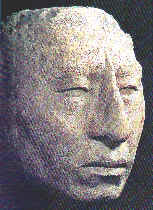|
|
In pre-Hispanic times, Mayas occupied wide region with different climates and varied vegetation: Mountains and plains, rain forest and arid areas; land with rivers, lakes and waterfalls, and long stretches of seacoast.
Maya area covered what are now the states of Quintana Roo, Campeche, Yacatan, Tabasco and Eastern Chiapas in Mexico, Guatemala, Belize and Western part of Honduras and El Salvador in Central America.
There are three large natural areas within this region: The first, Southern area, includes Pacific coast, Highlands of Guatemala, part of Chiapas and of El Salvador. Several volcanic lakes lie on the high plateau, for example Amatitlan, Atitlan and Izabal, together with Lake Guaja between Guatemala and El Salvador and in East, Lake Ayarza.
All this area is rich in fruit trees and timber and houses wide variety of animals and birds, including quetzal, which Mayas held sacred in the belief that it was representative of the gods.
The second or Central area is the largest, covering the interior basin of Peten Department in Guatemala, part of Honduras and Chiapas, Tabasco and Southern part of Yacatan Peninsula. This is an area of tropical forest with hot and humid climate containing several rivers, the most important of them being Grijalva, which empties into Gulf of Mexico, and Hondo, Sarstun and Mapon flowing into Caribbean.
This region of rain forest and pasture is extremely rich in hardwoods, such as cedar and also contains the most varied fauna in Maya area.
The third, or Northern, zone is Northern area of Yacatan peninsula. Its flat limestone expanses broken only by La Sierrita or Puuc Hills, running from Campeche to Yacatan that are 200 meters above sea level.
This is an extremely dry region, with scrub vegetation and yet a surprising number of medicinal herbs. There are three small rivers, Lagartos, Hondo and Champoton, and one lake, Bacalar.
Rainwater seeps down quickly in this limestone area to from underground deposits in caves; when the cave roof collapses, wells called "Cenotes" appear. These have been very important in the region's history, providing water for population. The ancient Mayas founded cities near them; one of the most important is Chichen Itza. Human being, rubber, jade, vessels, beads and artifacts were thrown into its Sacred Cenote as offering to Chaac, god of rain.

|
|

